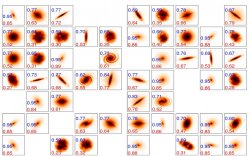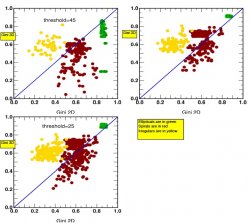
The site's hierarchy
- Science
- Conditions Initiales
- Simulations à grandes échelles
- Quintessence et formation des structures
- Horizon Reference simulations
- List of other cosmological simulations
- Marenostrum Simulations
- Horizon 4 π
- Dark energy universe simulations
- Simulations zoom
- Simulations idéalisées
- Observations virtuelles
- Détection des structures
- Outils de mise en ligne
- Outils statistiques
- Methodes inverses
- Outils de Visualisation
- Lecture et formats des données
- Routines et données de physique
- Equations modèles et algorithmes
- Calcul distribué
- Software
- Hardware
- Projet
- Programme
- Liste des tâches
- Conditions Initiales
- Modèles physiques et astrophysiques
- Equations modèles et algorithmes associés
- Modèles semi-analytiques
- Lecture et format des données
- Outils de visualisation
- Outils d’analyse statistique
- Outils de détection des structures
- Génération d’observations virtuelles
- Calcul parallèle et hardware
- Mise en ligne et bases de données
- Management des simulations
- Meetings
- Docs
- Liens
Navigation
| M | T | W | T | F | S | S |
|---|---|---|---|---|---|---|
| 23 | 24 | 25 | 26 | 27 | 28 | 1 |
| 2 | 3 | 4 | 5 | 6 | 7 | 8 |
| 9 | 10 | 11 | 12 | 13 | 14 | 15 |
| 16 | 17 | 18 | 19 | 20 | 21 | 22 |
| 23 | 24 | 25 | 26 | 27 | 28 | 29 |
| 30 | 31 | 1 | 2 | 3 | 4 | 5 |
- Les premiers zoom de galaxies sont accessibles
- Le halo FOF 6133 de la boite Horizon L et le halo FOF 544 de Horizon S ont été resimulés avec plusieurs techniques de zoom. Il est important que chaque "zoomer" valide sa méthode, avant de lancer une campagne de zoom sur un plus grand cataloque.
- Les données de la simulation Mare Nostrum sont disponibles
- 34 snapshots jusqu’à z=4 sont accessibles sur horizon3 et sur le serveur de fichiers de l’IDRIS à la collaboration Horizon.
- Méso Machine HPC1 opérationnelle
- Depuis le 23 Octobre 2005, la Méso machine du site horizon est operationnelle. Elle correspond à 3 quadriprocesseurs avec chacun 64 Giga de RAM reliés par infiniband, ainsi qu’un access conséquent (sur une base de projet dédié) au reste de la ferme). Son acces est ouvert a toute personne de la collaboration ayant acces à la minigrille et qui en fait la demande a admin-minigrille
- http://
- Workshop Horizon le 14 et 15 novembre 2005
- Il aura lieu à Paris les 14 et 15 novembre 2005 (prévoir une nuit sur place). L’enregistrement est ouvert dans la rubrique "meeting!"
- http://
Gini number and morphology classification
In the view of "analyzing" quickly some big numerical hydro simulations in which many complex galaxies form (with gaz, stars and all), one could maybe use the Gini coefficient to classify galaxies. These are home made galaxies (composed of a mixture of bulges with spiral disks). They are not designed to have perfect light profiles or colors.
We projected these 3D galaxies with random inclinations to get fake observed galaxies. And we measured the Gini coefficient for the pixels brighter than a given threshold. And just for fun, we computed the 3D Gini coefficient (we have the pixels in 3D space), thinking it would be more discriminating between ellipticals, spirals and irregular galaxies. But surprisingly, the Gini in 2D does a much better job than the 3D Gini coefficient in separating galaxy types.... It shows Gini3D (numbers in blue in the figure above) vs Gini 2D (numbers in red), for various brightness thresholds.


